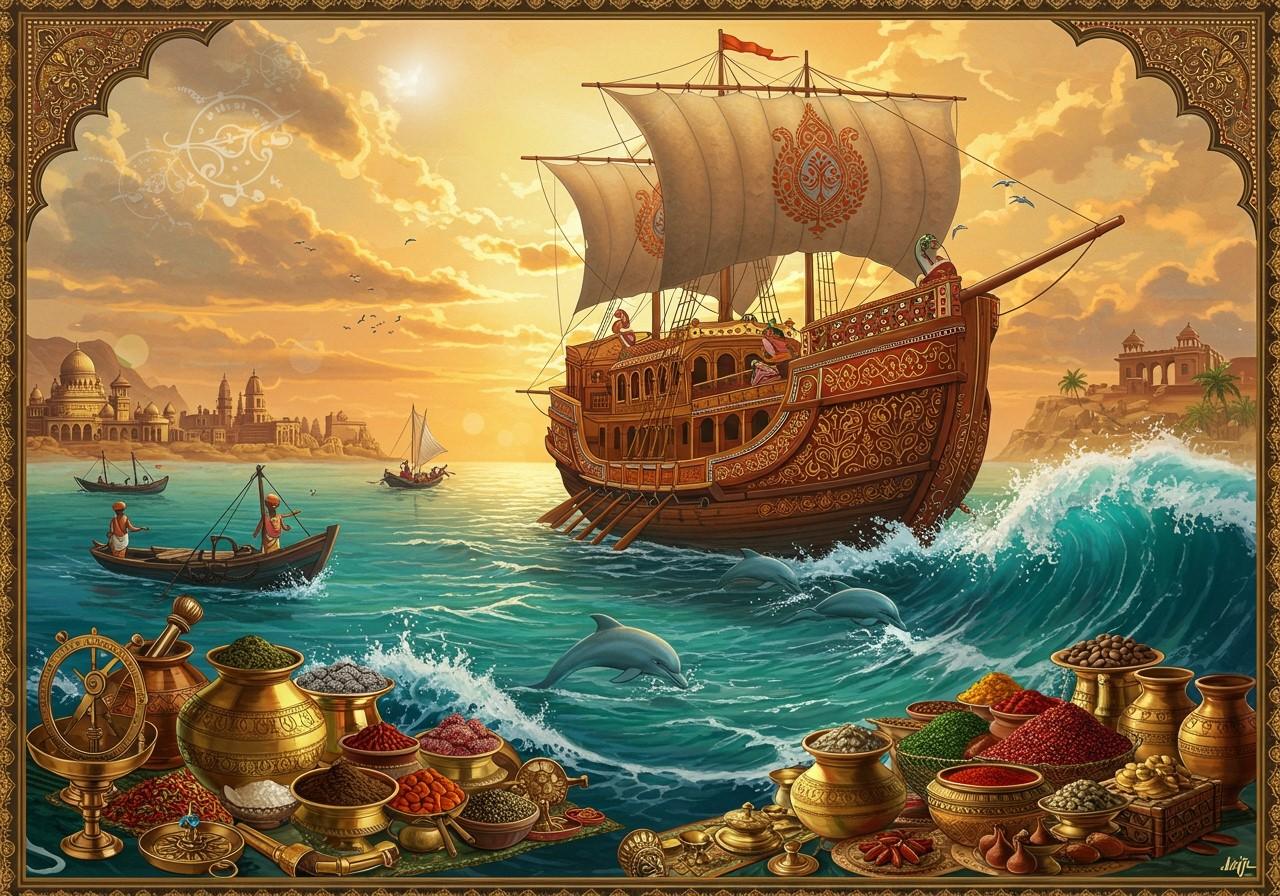India’s Maritime Significance: A Journey Through Ports, Trade, and Cultural Heritage

India’s maritime landscape is the very foundation of its economic strength. Situated within the Indian Ocean, India holds a pivotal role in global commerce, acting as a crucial link between nations. Understanding India’s ports is essential for businesses and individuals engaged in trade, tourism, and logistics. These ports are vital for import-export operations and the exchange of cultures.
A Look Back: India’s Maritime History
India’s maritime history is rich and extensive, stretching back to ancient times. Ports like Lothal played a significant role in the spice trade and cultural exchanges. Colonial influences shaped the modern development of Indian ports. These historical ports had a profound impact on trade routes, connecting India with the world.
India’s Ports: A Comprehensive Overview
India possesses a diverse range of ports, categorized by coastal regions. Major ports such as Mumbai, Chennai, and Kolkata handle substantial volumes of cargo. Minor ports like Kandla and Tuticorin also play vital roles in regional trade. Each port has its own economic and strategic significance, contributing to both regional economies and international shipping lanes.
Navigating the Indian Ocean: Key Shipping Routes
Crucial shipping routes in the Indian Ocean connect India to global markets. These routes facilitate trade between Asia, Africa, and the Middle East. Geopolitical factors influence these routes, underscoring the importance of India’s maritime security for protection. Traffic patterns reveal a diverse range of goods being transported worldwide. As highlighted in recent studies, approximately 40% of global energy supplies are transported from the Persian Gulf to Europe and Asia through these waterways.
- Major Routes: The Indian Ocean hosts vital maritime routes. One of the most heavily trafficked routes traverses Japan, South Korea, and China through the Taiwan Strait and the South China Sea, eventually reaching the Indian Ocean. Another key route passes through the South China Sea, Strait of Malacca, Indian Ocean, Red Sea, Suez Canal, and the Mediterranean Sea, ultimately reaching the Atlantic Ocean. The Strait of Hormuz links the Persian Gulf with the Gulf of Oman, the Arabian Sea, and the Indian Ocean.
- Chokepoints: Strategic chokepoints in the Indian Ocean, like the Strait of Malacca and the Strait of Hormuz, are critical to global commerce and energy supply. The Strait of Malacca is a crucial passage for a large percentage of global maritime traffic. The Strait of Hormuz is essential for international oil supply. The Bab-el-Mandeb Strait, connecting the Red Sea and the Gulf of Aden, is another vital link.
- Trade: The Indian Ocean serves as a central hub for trade routes to the east coast of Africa, the Arabian Sea, and the Persian Gulf. While intra-Indian Ocean trade has seen growth, it remains relatively modest compared to global trade volumes. Key players in regional trade include the United Arab Emirates, Singapore, India, Malaysia, and Saudi Arabia.
- Historical Significance: The Indian Ocean trade routes have a long and rich history, connecting Southeast Asia, India, Arabia, and East Africa since the 3rd century BCE. These routes facilitated the spread of goods, ideas, and religions.
Modernizing India’s Ports: Infrastructure and Development
Indian ports are undergoing significant infrastructure development to enhance their capacity. Government initiatives like the Sagarmala Project are focused on modernization efforts. Challenges persist, including congestion, outdated facilities, and environmental concerns. Technological advancements aim to improve efficiency and sustainability. This continuous development is crucial for maintaining India’s position in global trade.
The Economic Power of Ports: Impact and Growth
Ports have a substantial impact on both regional and national economies. They facilitate trade by reducing transportation costs and enhancing connectivity. Ports create jobs and contribute significantly to GDP. The logistics sector benefits greatly from efficient port operations, driving growth in industries like manufacturing, agriculture, and services.
Culture and Environment: Balancing Heritage and Progress
Ports in India hold cultural significance, serving as gateways for diverse traditions. Environmental challenges, such as pollution and habitat disruption, are being addressed through green technologies and sustainable practices. Maintaining a balance between preserving cultural heritage and promoting economic development is essential for responsible port expansion.
Poojn.in: Supporting Maritime Traditions
Poojn.in offers a wide selection of puja items essential for maritime-related ceremonies and rituals, deeply rooted in Indian coastal traditions. Our specialized products include coconuts for Varuna Puja (Water God worship), kumkum and rice for boat blessings, complete Nariyal (coconut) puja sets, brass and copper vessels for water offerings, natural incense and camphor for maritime rituals, and traditional oil lamps for coastal ceremonies. You can find all these and more on our website: https://www.poojn.in. Browse through our extensive collection and discover authentic products to enhance your rituals and ceremonies.
Conclusion: India’s Maritime Future
India’s maritime landscape encompasses more than just ports and trade routes; it represents a vibrant fusion of history, culture, and modern economic strength. Each port, from the bustling hubs of Mumbai to the smaller docks of Tuticorin, plays a crucial role in connecting India to the world. The Indian Ocean routes serve not only as pathways for goods but also as channels for cultural exchange and cooperation. As India continues to develop its port infrastructure and embrace sustainable practices, the future of its maritime sector appears bright.


